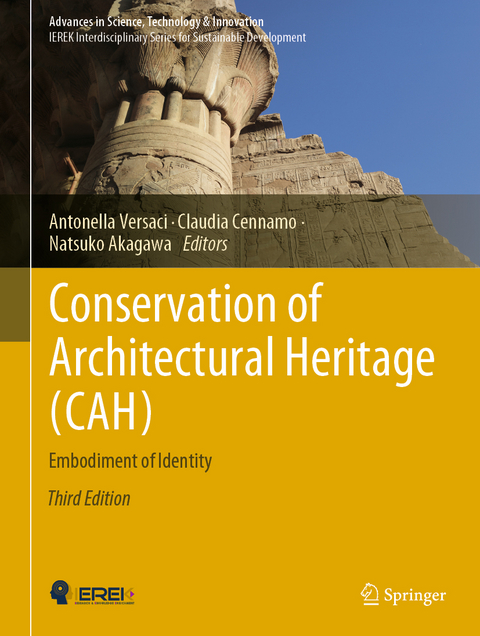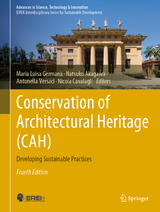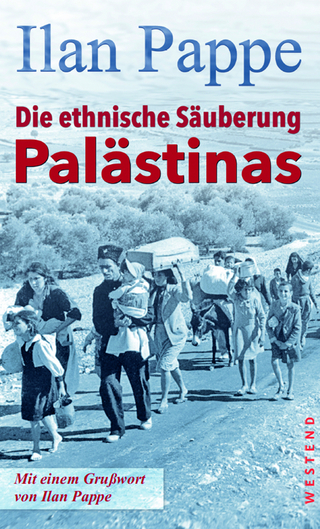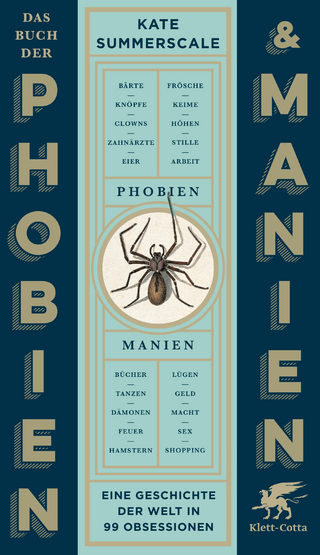
Conservation of Architectural Heritage (CAH)
Springer International Publishing (Verlag)
978-3-030-95563-2 (ISBN)
lt;p>Antonella Versaci is a researcher and assistant professor at the Faculty of Engineering and Architecture, University "Kore" of Enna, where she is responsible of the "Laboratory of Restoration of Architectural and Cultural Heritage" and teaches "architectural restoration" and "laboratory of architectural restoration" within the Master of Architecture.
She is also an associate researcher at the Institut Parisien de Recherche Architecture Urbanistique Société (IPRAUS), a research laboratory of the ENSAPB-National Superior School of Architecture of Paris-Belleville (UMR 3329 Ausser).
Her research applies to the issues of safeguarding and conservation of historic buildings and landscape, with particular attention to cultural heritage spread across the territory and to the protection of historic centers, as well as to their survey, diagnosis, classification and valorization.
In 1996, she earned a master's degree in Building Engineering at the University of Messina and, the following year, obtained a scholarship for postgraduate specialization courses abroad.
She then attended in Paris two courses of specialization in urban preservation, strategic planning and management earning both degrees. In 2005, she received a Ph.D. degree cum laude in "Architecture" from the University of Paris VIII, with a dissertation on the legislation on historic centers in France.
From June 2004 to September 2008, she was a UNESCO International staff member, responsible for numerous cultural projects in Southeastern Europe, including those related to the creation of a School of Restoration in Tira na (Albania) and to a Center for Digitization of heritage cultural in Skopje (FYROM).
She is the author of over 90 refereed publications.
Claudia Cennamo has been Ph.D. in Science and Technique in Historic and Modern Architecture at the University of Rome La Sapienza since 1996. She has been a researcher in the field of Structural Mechanics since 2002 and has carried out didactic activity at the Department of Architecture and Industrial Design of the University of Campania Luigi Vanvitelli, since the academic year 2004/2005. At present, she is an associate professor, and with her research group, she works in the field of safeguard of architectural heritage and historical masonry structures, especially by using calculation methods for unilateral materials. She is the author and co-author of about 150 papers regarding the issue.
Natsuko Akagawa is tenured at The University of Queensland. She is the author of heritage conservation in Japan's cultural diplomacy: heritage, national identity and national interest (Routledge 2014), the seminal work theorising Heritage and Cultural Diplomacy. She is a co-editor of Safeguarding Intangible Heritage (Routledge 2019) and Intangible Heritage (Routledge 2009), internationally influential studies on Intangible Heritage. She is the expert member for International Council on Monuments and Sites (ICOMOS) and member of the International Council of Museums (ICOM).
Conservation of Architectural Heritage (CAH) - 5th Edition
Conference Topics
- 1. Identification of Architectural Heritage Conservation
1.1 History of Architectural Conservation
1.2 Utopian and Sacred Architecture
1.3 Nomad's Architecture and Desert Communities
1.4 Governance, Partnerships, and Communities of Practice
1.5 Awareness of Heritage Rehabilitation Projects
- 2. Importance of Architectural Heritage Conservation
2.1 Understanding the Significance of Cultural Heritage Conservation
2.2 Ways to Conserve the Architectural Heritage
2.3 Conserving the City's Tradition and Identity through the Protection of the Architectural Heritage
2.4 Effects of Architectural Heritage Conservation on Tourism Development and Urban Preservation
2.5 Socio-economics Impact and Environmental Benefits of Heritage Conservation
- 3. Architectural Heritage Conservation Techniques
3.1 Protecting Architecture Ethnic Groups
3.2 Conservation of Cultural Memories through Interior Designs
3.3 Principles of Conservation of Archaeological Sites
3.4 Conservation and Development of Heritage Landscape Planning
3.5 Ecosystem Management and Conservation Strategies
- 4. Management and Conservation of Architectural Heritage
4.1 Impact of Conservation of Architectural Heritage on the Environmental Protection
4.2 Materials Used in the Protection of the Heritage Sites
4.3 Challenges of Conserving the Architectural Heritage
4.4 Passing down Cultural Heritage and Identities to the Future Generations
4.5 Best Practices in Assessment, Designating, and Managing World Heritage
5.1 Mapping archaeological sites using Geographic information System (GIS)
5.2 using remote sensing to monitoring the changes in Heritage sites.
5-3 Using ultra-sounds and other rays in her age building treatments and the through the processing of rehabilitation
5.4 new materials and methods of cracks treatments
5.5 international case studies used technologies in conserving heritage buildings and sites.
| Erscheinungsdatum | 29.04.2022 |
|---|---|
| Reihe/Serie | Advances in Science, Technology & Innovation |
| Zusatzinfo | XIV, 318 p. 229 illus., 179 illus. in color. |
| Verlagsort | Cham |
| Sprache | englisch |
| Maße | 210 x 279 mm |
| Gewicht | 1046 g |
| Themenwelt | Geschichte ► Teilgebiete der Geschichte ► Kulturgeschichte |
| Sozialwissenschaften | |
| Schlagworte | Cultural Heritage Management • Cultural values • effective policies • Heritage Conservation • Responsibility in Architecture • sustainability • Urban space |
| ISBN-10 | 3-030-95563-X / 303095563X |
| ISBN-13 | 978-3-030-95563-2 / 9783030955632 |
| Zustand | Neuware |
| Haben Sie eine Frage zum Produkt? |
aus dem Bereich



